![]()
![]()
![]()
Use LEFT and RIGHT arrow keys to navigate between flashcards;
Use UP and DOWN arrow keys to flip the card;
H to show hint;
A reads text to speech;
22 Cards in this Set
- Front
- Back
- 3rd side (hint)
|
Synthesis |
A part of metabolism where raw materials are built into compounds used for growth and maintenance |

2. My cell synthesized starch out of glucose |
|
|
Biosynthesis |
Synthesis reactions that combine small parts to make big ones |

2. ATP, a product of decomposition,is used in biosynthesis |
|
|
Decomposition |
A part of metabolism where large molecules and compounds are broken down into simpler ones or used for energy |
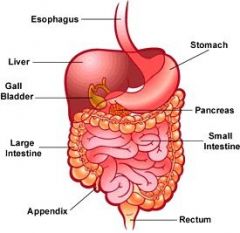
2. My enzymes use decomposition to make some of my molecules smaller |
|
|
Cell Respiration |
A kind of decomposition where substances (mostly sugars) are broken down to yield ATP, CO2 and Water |
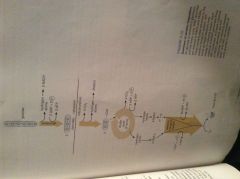
2. The ATP made in cell respiration helps my brain work |
|
|
Aerobic |
Common cell respiration that uses oxygen |
1. Cell respiration that has the Kreb's Cycle and ETS 2. Aerobic respiration got me tons if ATP |
|
|
Anaerobic |
Less effective cell respiration that doesn't use oxygen |

2. Anaerobic respiration gets me only two ATP!!! |
|
|
Fermentation |
Type of anaerobic respiration where only glycolysis happens |
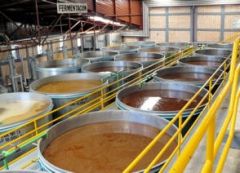
3. Fermentation can't support complex organisms for very long |
|
|
Glycolysis |
The first step of cell respiration where a molecule of glucose is split into two molecules of pyruvate |
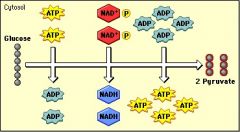
2. Glycolysis is the only part of cell respiration that uses ATP |
|
|
Krebs Cycle |
Second step of cell respiration where glucose in converted to carbon dioxide |
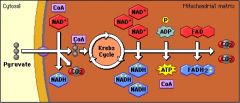
2. Fats, proteins, and carbs can be used in the Krebs Cycle |
|
|
ETS |
The third step of cell respiration where protons and electrons are to create ATP |
1. When protons pass through ATP synthtease 2. Both the chloroplast and mitochondria have an ETS |
|
|
NADH/ FADH2 |
Products created in glycolysis in Krebs cycle that are used to create ATP in ETS |
1. Compounds that are made 10 total in glycolysis 3. FAD2 and NADH are used in all steps of cell respiration |
|
|
Pyruvate/Pyruvic Acid |
A carbon compound that is a product of glycolysis |
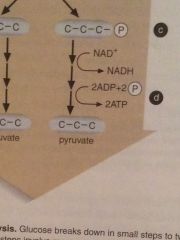
2. Pyruvate becomes carbon dioxide in the Krebs Cycle |
|
|
Lactate/ Lactic acid |
Product of lactic acid fermentation that pyruvate converts into |

2. Lactic acid will build up unless there is oxygen |
|
|
Alcoholic fermentation |
Type of fermentation that happens in living yeast |

2. Alcoholic fermentation is a technique of expert winemakers |
|
|
Lactic acid fermentation |
Type of fermentation that cycles lactate to get a small amount of ATP |
1. Fermentation that happens to people running heptathalons 2. Humans can use lactic acid fermentation |
|
|
Mitochondrion |
Parts of cell where steps 2 and 3 of cell respiration take place |
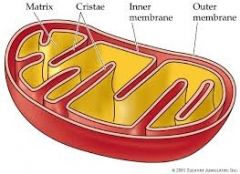
2. My cells can have over 1000 mitochondrion |
|
|
Cristae |
Folds on the mitochondria that have many enzymes used for reactions in steps 2 and 3 of cell respiration |

2. I wonder if my cristae feel like a maze for my pyruvate and NADH |
|
|
Cytochromes |
Enzymes and proteins that transfer electrons and protons through the ETS |

2. The final cytochrome uses oxygen and creates water |
|
|
Facultative Aerobes |
Bacteria that are able to use Aerobic and Anaerobic respiration |
1. E coli 2. Facultative aerobes have the best of both worlds |
|
|
Obligate Aerobes |
Bacteria that can only use anaerobic respiration |
1. Veillonella parvula 2. Since obligate anaerobes are poisoned by oxygen many of them must be chemoautotrophs
|
|
|
Obligate Aerobes |
Organisms that can only use aerobic respiration |

2. My math teacher is an obligate aerobe, he will die if I lock him in a room with no oxygen |
|
|
Hydrolysis |
An imprecise type of decomposition where water is used to break bonds between polymers |

2. Water is needed for the hydrolysis of removing stains |

